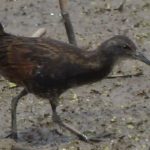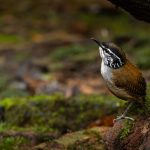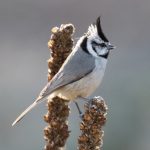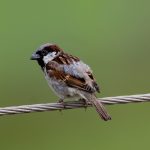Will at The Nightjar, who enjoys the coveted status of official friend of 10,000 Birds, just completed an excellent series analyzing how American farms have historically affected avifauna. While he concerns himself primarily with agricultural ecosystems prevalent from the nation’s bread-basket to our mid-Atlantic coast, Will’s treatment of grassland birds and the role of farmers provides a launching pad for consideration of these entwined issues no matter where a person hails from.
Farming today I think is much more environmentally conscious than ever before, but many farmers have no choice but to choose economics over nature. As a result many farmers have practices that are not environmentally friendly..
Serious subjects usually require more than one post to pursue. Will begins this farm-friendly five-parter with a brief look at The History of The American Farm followed by a layman’s analysis of Traditional and Current Farming Practices. Understanding some of the common practices in farming, both historically and in use today, provides the necessary foundation for the next topic for review – the birds!
I invite everyone to go and take a walk in a field right now (wear Orange its hunting season). Right now its Sparrow time, with zillions of Song Sparrows, but also lots of Savannah, Vesper, White-throated and White-Crowned Sparrows… Watch for a Gray Ghost (a male Northern Harrier) cruising over the fields or to see the tawny fluff of a Short-Eared Owl sitting on a fence post. In a couple of weeks, look for Northern Shrike and Common Redpolls feeding on weed seeds. Many of these species would not be as visible, common or stay as long if it wasn’t for the beneficial effects of farming.
An evenhanded essay on the impact of agriculture on avian diversity has to recognize both Birds who Benefited from Farming as well as Farm Birds in Peril. Will’s Empire State influence is apparent as he discusses the plight of grassland birds like Upland Sandpipers (Did you know that this species used to nest at airports, but anti-terrorist measures in a lot of areas have prompted airport officials to keep everything mowed to prevent any hiding spaces?) but his lines of reasoning can be extended to farms everywhere.
For many species when farmers mow their fields has a huge impact on their nesting success. If farmers try and get two cuts a year in, these species have little or no chance of successfully breeding. So the simplest method would be to encourage farmers to mow later right? Well sure, but there is no economic benefit to them doing this, or is there?
The final installment of this series discusses nothing less than The Future of Birds and Farming. Far be it from me to ruin the ending, so I’ll just say that the answer is obviously not to make foes out of farmers. The New Environmentalism, if such an animal exists, admits to the critical role private landowners, farmers, and ranchers play in the stewardship of vital habitat. We’re not going back to Gaea nor will we discover a solution to human hunger that doesn’t involve food. If responsible conservationism means striving towards a world where profitable agriculture co-exists with healthy, balanced ecosystems, then this series sets a good tone for the trip.












Leave a Comment